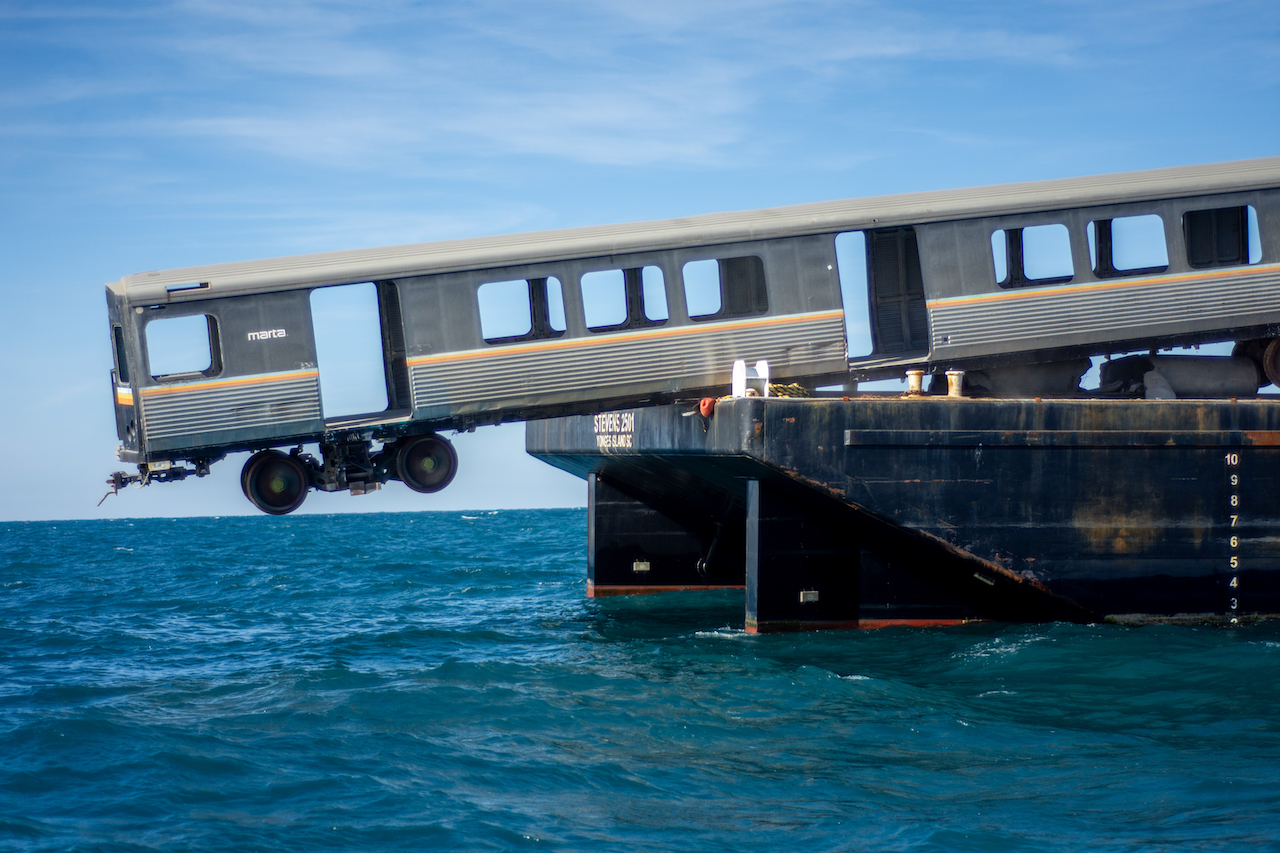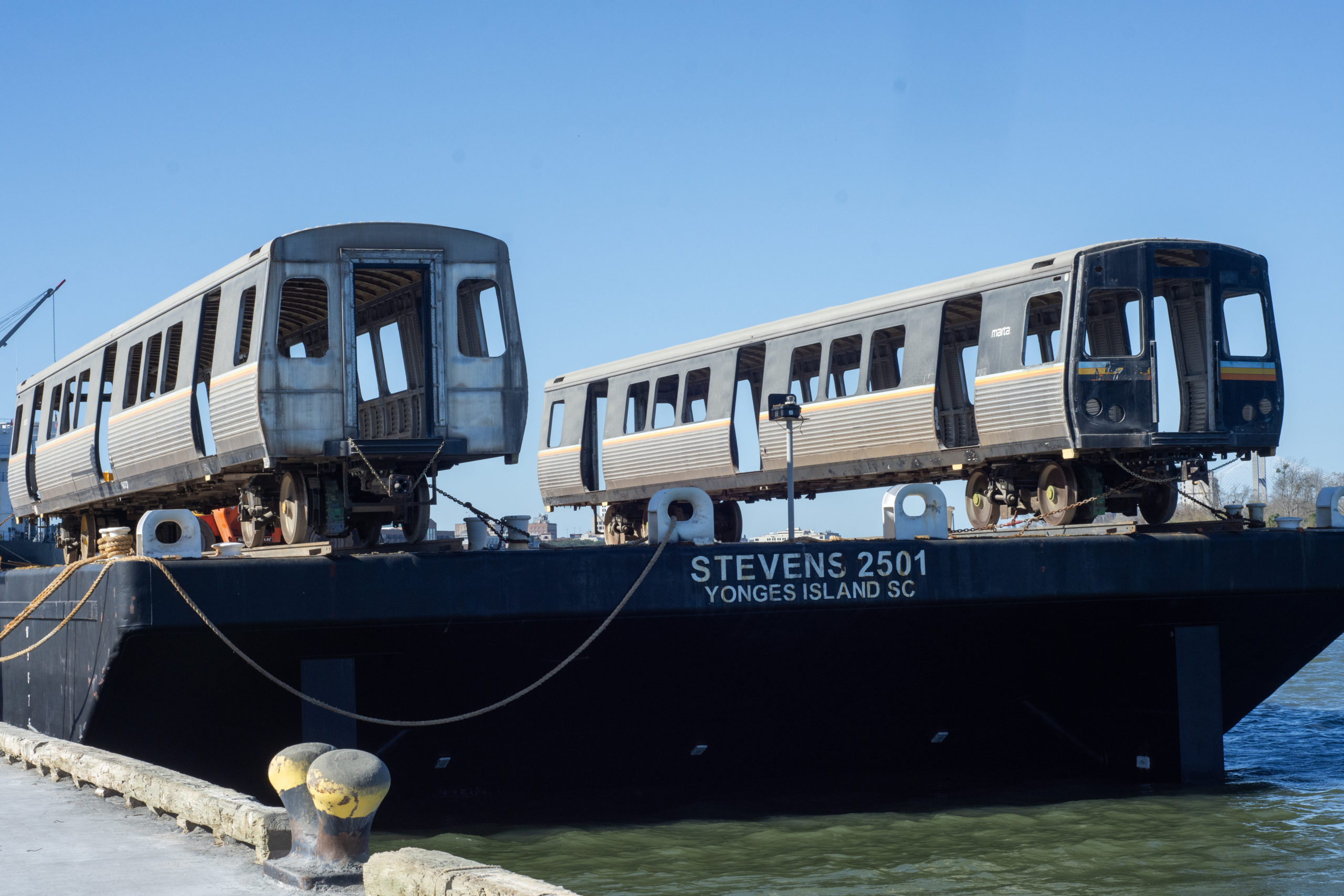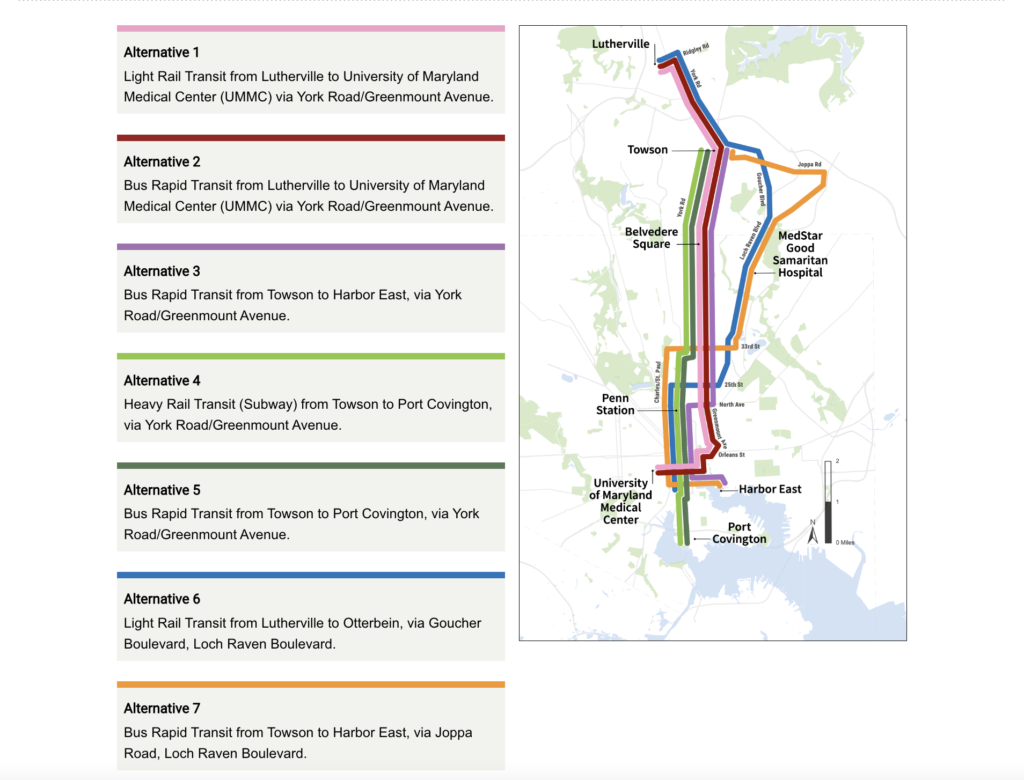
Transit Briefs: Amtrak, MARTA, Maryland DOT MTA, Metrolinx
Written by Carolina Worrell, Senior Editor
Concrete materials and retired MARTA railcars are placed at Artificial Reef L about 23 nautical miles east of Ossabaw Island on Thursday, Dec. 21, 2023.
Amtrak earns the top score on the Human Rights Campaign Foundation’s 2023-2024 Corporate Equality Index (CEI). Also, the Metropolitan Atlanta Rapid Transit Authority (MARTA) deploys railcars into the Atlantic Ocean; the Maryland Department of Transportation Maryland Transit Administration (Maryland DOT MTA) completes the feasibility study for the North-South Transit Corridor; and Metrolinx selects AECOM as its delivery partner for the Eglinton Crosstown West Extension project.
Amtrak
Amtrak announced Dec. 22 that it has received a score of 100 on the Human Rights Campaign Foundation’s 2023 CEI.
Scored out of a possible 100 total points, Amtrak received the highest score possible on the report, which measures corporate policies and practices related to LGBTQ+ workplace equality.
“Being recognized by the Human Rights Campaign validates Amtrak’s work to continue building a diverse and inclusive workplace,” said Roger Harris, President of Amtrak and Co-Executive Sponsor of Express Pride, Amtrak’s Employee Resource Group for LGBTQIA+ employees, friends and families. “We want every employee—regardless of how they identify or who they love—to thrive which is why we’re excited to expand our benefits and connect employees to inclusive care.”
The results of the 2023-2024 CEI showcase how U.S.-based companies are promoting LGBTQ+ friendly workplace policies in the U.S. and abroad. While the first year of the CEI included 319 participants, 2023-2024 now includes 1,384 participants. According to Amtrak, the company satisfied all of CEI’s criteria earning a score of 100 and the designation as recipient of the Equality 100 Award: Leader in LGBTQ+ Workplace Inclusion.
“This recognition says so much about our company and our continued commitment to sustaining a culture of belonging,” said Eldie Acheson, Executive Vice President and General Counsel and Corporate Secretary of Amtrak and Co-Executive Sponsor of Express Pride with Amtrak President Roger Harris.
The CEI rates companies on detailed criteria falling under four central pillars:
- Non-discrimination policies across business entities.
- Equitable benefits for LGBTQ+ workers and their families.
- Supporting an inclusive culture.
- Corporate social responsibility.
The full report is available here.
MARTA
MARTA and the Georgia Department of Natural Resources recently partnered to deploy two decommissioned railcars into the Atlantic Ocean off the coast of Savannah where, over time, they will develop into reef habitats for marine wildlife.
Earlier this year, the dismantled older model railcars were stripped of hazardous materials and contaminants and inspected and approved by the U.S. Coast Guard for deployment as artificial reef material. On Thursday, Dec. 21, the railcars were transported by barge to Artificial Reef L, an established reef about two square miles in size, located approximately 23 nautical miles east of Ossabaw Island and deployed in about 55 to 65 feet of water.
Over time, MARTA says the railcars will provide essential marine habitat for sea creatures, including popular sport fish and endangered sea turtles. While the substrate for the reef is manmade, the organisms that will grow on it are entirely natural and beneficial for the environment. Fish and other marine life, such as sea turtles are likely to investigate the new habitat almost immediately. Corals, sponges, and other encrusting organisms will begin to take hold on the railcars in about one year and will continue to grow and improve the longer they are in the ocean. SCUBA divers and anglers can begin using the reef immediately.
MARTA’s railcars join previously deployed materials, including U.S. Army M-60 battle tanks, barges, tugboats, New York City subway cars, and other manmade structures. Artificial Reef L was first created in 1976 as part of a network of 32 offshore reefs that the Coastal Resources Division has been building and improving for more than 40 years.

“It was thrilling to be part of repurposing two of our original railcars in this environmentally responsible way,” said MARTA Board of Directors Chair Thomas Worthy. “We hope to provide more retired railcars for reef deployment, as well as find other inventive ways to reuse decommissioned railcars as we make room for the new CQ400 trains, the first of which arrives in Atlanta for testing next year.”
“This project has been a long time in the works, and we are so glad to have these MARTA railcars offshore now to provide essential fish habitat, diving opportunities, and another great offshore fishing location,” said Cameron Brinton, a marine biologist with DNR’s Coastal Resources Division, which oversees artificial reef creation on Georgia’s coast.
Maryland DOT MTA
Maryland DOT MTA on Dec. 21 announced that it has completed the feasibility study for the North-South Transit Corridor, designed to provide better transit connections between the Towson area of Baltimore County and downtown Baltimore.
The study, which will advance to analyze various options in the coming year, is part of the Central Maryland Regional Transit Plan, a 25-year plan released in October 2020 by a team that included the Regional Transit Plan Commission, the Baltimore Metropolitan Council, the public, and representatives from local jurisdictions.
The North-South feasibility study (download below) explored a range of alignment and mode options—light rail, subway and bus rapid transit (BRT)—intended to enhance service to the community by increasing mobility, access to jobs and connectivity to other transportation options in the corridor. Details on the study and the preliminary alternatives are available here.

Following a presentation in fall 2022 of the preliminary alternatives in print, online and in-person, the study team conducted public engagement and gathered feedback to “refine project goals, identify measures of effectiveness and enable data-based comparisons between the preliminary alternatives.” From seven preliminary alternatives presented, the study concluded the following:
- A segment along York Road north of Towson, as well assegments along Loch Raven Boulevard/Joppa Road/Goucher Boulevard—which were part of other Regional Transit Plan preliminary alternatives—will not be included in the next phase of study for this project.
- Further analysis is needed south of downtown Baltimore. The study indicated strong demand at both Harbor East and Baltimore Peninsula, and analysis of potential performance and input from stakeholders is needed to determine how to best serve those locations.
- Further analysis also will be needed to compare Greenmount Avenue with Charles and St. Paul streets to determine the best route between 33rd Street and North Avenue. Greenmount Avenue did not perform as well as Charles and St. Paul streets in this area, with the study finding lower projected ridership. However, employment densities to the west of the corridor and the distribution of transit-oriented population east of Greenmount Avenue warrant further analysis.
- BRT, light rail and subway will all advance as options for further study and alternatives development.
In the alternative analysis phase starting in 2024, the project team will assess transit, traffic operations and environmental impacts of each alternative, as well as combinations of different types of transit modes and connections to key destinations. The review also will evaluate potential access to federal funding.
“Public input is key to the success of transit initiatives,” said MTA Holly Arnold. “The response and interest our riders have shown in a more substantive north-south transit presence confirms that we’re on the right track. Our next steps will help us refine the proposed alternatives and gather additional public feedback.”
Throughout the analysis phase, public engagement will be conducted to share progress and solicit input from the community. The next round of public engagement activities is planned for mid-2024.
Metrolinx
Metrolinx on Dec. 22 announced that it has selected infrastructure consulting firm AECOM to serve as its delivery partner for the Eglinton Crosstown West Extension project, a 9.2-kilometer (5.7-mile) extension of the upcoming Eglinton Crosstown Light Rail Transit (LRT) from the future Mount Dennis Station to Renforth Drive.
When complete, the project will create a continuous rapid transit line that stretches from Scarborough, through midtown Toronto, and into Mississaug, according to Metrolinx.
As delivery partner, AECOM says it will be an “integral part” of the Metrolinx delivery team across the full breadth of infrastructure for the project. This includes a global and multi-disciplinary service offering, integrating the company’s program management, advisory, commercial management, procurement and supply chain management, and project supervision services, among others.
The project will connect with other local and regional transit, including UP Express and GO Transit rail services, as well as TTC, MiWay and GO Transit bus services. Most of the extension will be underground with a portion of the line running on an elevated guideway between Scarlett Road and Jane Street. Plans are also being explored with the Greater Toronto Airports Authority to extend the line to Toronto Pearson International Airport.
“We’re honored to partner with Metrolinx to realize this key part of Ontario’s historic transportation vision,” said Richard Barrett, Chief Executive of AECOM’s Canada region. “By connecting our industry-leading transportation expertise with our unique program management capabilities through a global and collaborative culture, we’re prepared to support this transformative program that is expected to expand transit access to neighborhoods throughout Toronto, bringing lasting benefits to the region.”
“Fast, convenient public transportation is a crucial alternative to automobiles that are a major source of urban air pollution,” said Drew Jeter, Chief Executive of AECOM’s Program Management global business line. “We are excited to bring the full strength of our firm to this project, which will not only improve the quality of life for residents and commuters but also the environmental outcomes for communities. This is a great example of AECOM’s ongoing commitment to leaving a positive, lasting impact on people and our planet through our Sustainable Legacies strategy.”



